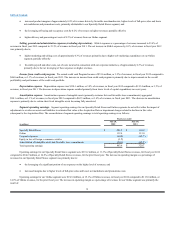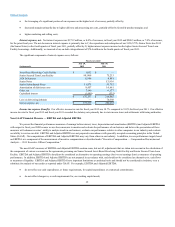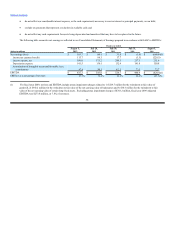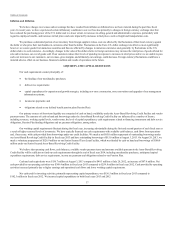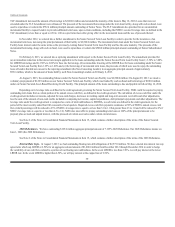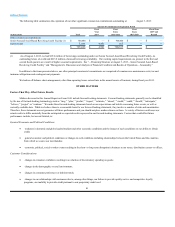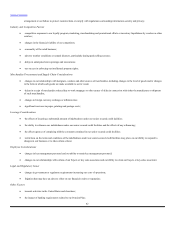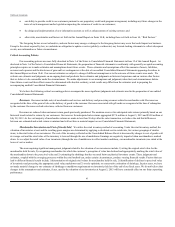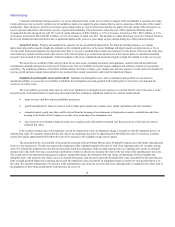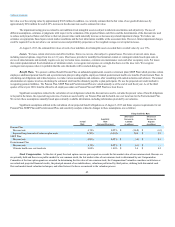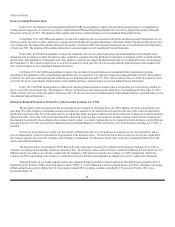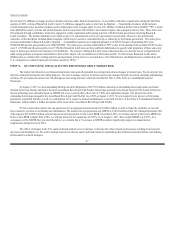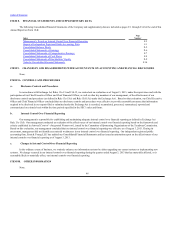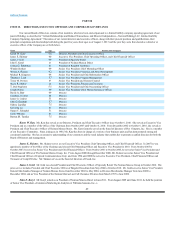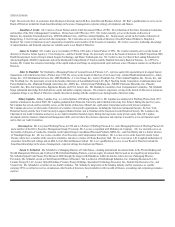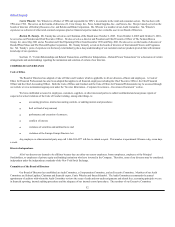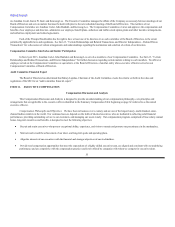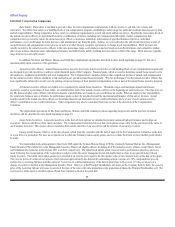Neiman Marcus 2012 Annual Report Download - page 46
Download and view the complete annual report
Please find page 46 of the 2012 Neiman Marcus annual report below. You can navigate through the pages in the report by either clicking on the pages listed below, or by using the keyword search tool below to find specific information within the annual report.
Table of Contents
Consistent with industry business practice, we receive allowances from certain of our vendors in support of the merchandise we purchase for resale.
Certain allowances are received to reimburse us for markdowns taken or to support the gross margins that we earn in connection with the sales of the vendor’s
merchandise. These allowances result in an increase to gross margin when we earn the allowances and they are approved by the vendor. Other allowances we
receive represent reductions to the amounts we pay to acquire the merchandise. These allowances reduce the cost of the acquired merchandise and are
recognized at the time the goods are sold. We received vendor allowances of $90.2 million, or 1.9% of revenues, in fiscal year 2013, $92.5 million, or 2.1%
of revenues, in fiscal year 2012 and $87.5 million, or 2.2% of revenues, in fiscal year 2011. The amounts of vendor allowances we receive fluctuate based on
the level of markdowns taken and did not have a significant impact on the year-over-year change in gross margin during any of the periods presented.
Long-lived Assets. Property and equipment are stated at cost less accumulated depreciation. For financial reporting purposes, we compute
depreciation principally using the straight-line method over the estimated useful lives of the assets. Buildings and improvements are depreciated over five to
30 years while fixtures and equipment are depreciated over three to 15 years. Leasehold improvements are amortized over the shorter of the asset life or the lease
term (which may include renewal periods when exercise of the renewal option is at our discretion and exercise of the renewal option is considered reasonably
assured). Costs incurred for the development of internal computer software are capitalized and amortized using the straight-line method over three to ten years.
We assess the recoverability of the carrying values of our store assets, consisting of property and equipment, customer lists and favorable lease
commitments, annually and upon the occurrence of certain events. The recoverability assessment requires judgment and estimates of future store generated
cash flows. The underlying estimates of cash flows include estimates for future revenues, gross margin rates and store expenses. To the extent our estimates for
revenue growth and gross margin improvement are not realized, future annual assessments could result in impairment charges.
Indefinite-lived Intangible Assets and Goodwill. Indefinite-lived intangible assets, such as tradenames and goodwill, are not subject to
amortization. Rather, we assess the recoverability of indefinite-lived intangible assets and goodwill in the fourth quarter of each fiscal year and upon the
occurrence of certain events.
The recoverability assessment with respect to each of our indefinite-lived intangible assets requires us to estimate the fair value of the asset as of the
assessment date. Such determination is made using discounted cash flow techniques. Significant inputs to the valuation model include:
· future revenue, cash flow and/or profitability projections;
· growth assumptions for future revenues as well as future gross margin rates, expense rates, capital expenditures and other estimates;
· estimated market royalty rates that could be derived from the licensing of our tradenames to third parties in order to establish the cash flows
accruing to the benefit of the Company as a result of our ownership of our tradenames; and
· rates, based on our estimated weighted average cost of capital, used to discount the estimated cash flow projections to their present value (or
estimated fair value).
If the recorded carrying value of the tradename exceeds its estimated fair value, an impairment charge is recorded to write the tradename down to its
estimated fair value. We currently estimate that the fair value of our tradenames decreases by approximately $344 million for each 0.5% decrease in market
royalty rates and by approximately $81 million for each 0.25% increase in the weighted average cost of capital.
The assessment of the recoverability of the goodwill associated with our Neiman Marcus stores, Bergdorf Goodman stores and Online reporting units
involves a two-step process. The first step requires the comparison of the estimated enterprise fair value of each of our reporting units to its recorded carrying
value. We estimate the enterprise fair value based on discounted cash flow techniques. If the recorded carrying value of a reporting unit exceeds its estimated
enterprise fair value in the first step, a second step is performed in which we allocate the enterprise fair value to the fair value of the reporting unit’s net assets.
The second step of the impairment testing process requires, among other things, the estimation of the fair values of substantially all of our tangible and
intangible assets. Any enterprise fair value in excess of amounts allocated to such net assets represents the implied fair value of goodwill for that reporting unit.
If the recorded goodwill balance for a reporting unit exceeds the implied fair value of goodwill, an impairment charge is recorded to write goodwill down to its
fair value. We currently estimate that a 5% decrease in the estimated fair value of the net assets of each of our reporting units as compared to the values used in
the preparation of these financial statements would decrease the excess of
44


